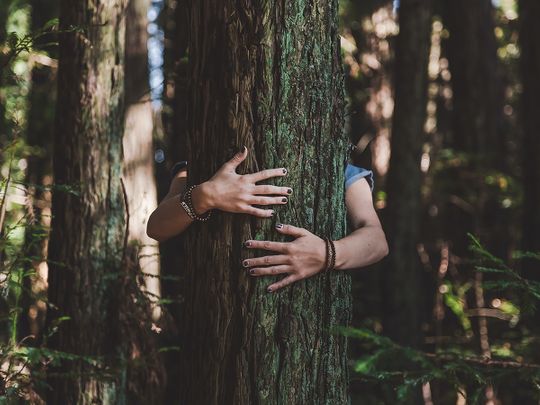
If you think of environmentalists, you might think of young Swedish activist Greta Thunberg, or American actor Leonardo DiCaprio, or English primatologist Jane Goodall. But long before any of them came into the picture, a small group of women in a village in the Himalayas were protesting for the environment.
Click start to play today’s Spell It, where you can find these ‘unsung’ heroes of climate change.
High up in the Indian Himalayas, on the slopes of Hemwalghati, lies Reni village. On March 26, 1974, a group of peasant women were responsible for a historic protest – known as the Chipko Movement – in an effort to protect the trees around their homes.
At the time, deforestation was plaguing the area – it had already led to the erosion of land and frequent landslides. When the Indian government contracted out the last remaining timber, the locals feared their village would literally slip off the mountain.
The women of the village had had enough.
On the day the contractors approached the village, many spread across the area and hugged the trees, while others stationed themselves around the trees in groups, on guard.
According to the website of the Food and Argiculture Organisation of the United Nations (FAO), a young woman named Gaura Devi later recounted the encounter to reporters. She described how the women faced down men with guns, challenging them to shoot the women instead of cutting down the trees. Devi was reported to have told the loggers that the forest was her ‘maika’ (or ‘mother’s home’ in Chamoli).
Faced with the villagers’ determination, and the fact that they were physically blocking the way, the lumber company was eventually forced to withdraw from the area.
According to a December 2017 report in US-based news website Huffington Post, it was the first forest ‘satyagraha’ – a form of nonviolent protest – to protect the environment, and it started a chain reaction, with other villagers picking up the same strategy to protest all across India. And on the frontlines, everywhere, were village women, hugging the trees to protect them from loggers.
As it gained traction, the movement began to be called Chipko Andolan, which translates to the ‘hugging movement’, since the women would literally embrace the trees and refuse to let go. Men took note, once they saw the strategy worked, and even became leaders of the Chipko movement in certain villages. But it was women who were the driving force. In some places, like Gopeshwar, India, the women formed a cooperative called the Mahila Mandal, which pledged to protect the forest around the town. Run by watchwomen who receive regular wages, the cooperative is a great success.
In 1975, Indian physicist and environmental campaigner Vandana Shiva brought the Chipko movement into the spotlight, helping it become a model for peaceful protest and eco-feminism. In 1987, the Chipko Movement was presented the Right Livelihood Award, an annual international award given to “honour and support those offering practical and exemplary answers to the most urgent challenges facing us today,” according to the award’s website. It’s considered to be the alternative to the Nobel Prize.
What do you think of these pioneering eco-feminists? Play today’s Spell It and tell us at games@gulfnews.com.





